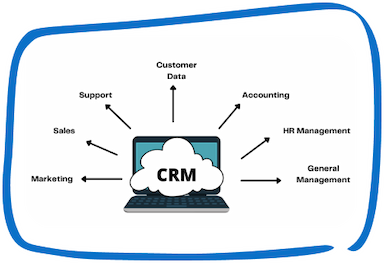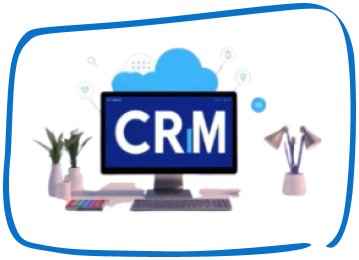Some tips for improving inventory management efficiency
Sort your stock into categories.
Sorting your inventory into categories helps identify expensive, slow-moving products and cheaper, fast-moving ones. Businesses commonly use the ABC technique for inventory grouping. It categorizes low-cost, fast-moving items as C and high-cost, slow-moving items as A. Category B items have moderate prices and moves slower than C but faster than A. Consequently, Category C items require more frequent orders than those in B, which need more frequent orders than A. You may also want to group inventory by customer type, profitability, and carrying cost to make the best decisions for each type. Sorting the category becomes easy with inventory management software.
The fact that inventory depreciates with time is another crucial factor to consider. When a product doesn’t sell as well as expected, it wastes money that could be spent on other highly-liked products. Providing discounts and coupons is another efficient strategy for getting rid of slow-moving inventory. In the end, keeping an item in your system will be a loss if it is not moving at all.
Simplify Inventory Management
Keep track of stock, manage orders, and streamline your supply chain with our intuitive inventory management system. Boost efficiency and reduce errors with real-time updates.
Be clear about the prices.
Examining inventory at cost per unit is the traditional method, but it does not provide you with a complete view. You should also investigate related expenses, such as how much it costs to transfer and store the unit, what occurs during restocking, how to handle seasonal discounts, how to apply a wholesale discount received as a result of a large purchase, etc. Additional expenses like freight, bulk discounts, and warehousing are dispersed along the supply chain. You can determine the true cost of an item and its market value with more accuracy when you take into account all of these variables. Utilizing lower costs and safeguarding yourself against rising costs, will help you increase your profit margins. Locate and modify all your inventory prices in one system which is an inventory management software solution.
Keep track of all inventory data.
You should always have an up-to-date, comprehensive record of every item that is a part of your inventory. This data should include SKUs, barcode information, suppliers, lot numbers, and other details. You should monitor the cost of each item over time. Costs may change due to factors like seasonality or scarcity. Additionally, consider inventory capacity. This includes factors such as available storage space, mobility of inventory, and required human labor for maintenance. Businesses can use inventory management software to track all the data regarding inventory and stock levels.
You will be able to make the best choices possible regarding the acquisition and flow of your goods with the help of all this information.
Inspect your stock.
It is crucial to periodically perform a physical stock count, often known as a stock check. Depending on the type of business, you can conduct counts annually, monthly, weekly, or even daily. This is especially important for your category C items, which sell the quickest. Regardless of the counting strategy used, you should periodically audit your inventory to make sure the information is consistent with what is recorded in your books. Inventory management software keeps all your stock and supplier information and gives you a simplified overview of that.
Assess the performance of the supplier.
An unreliable supplier is among the most important factors that can make or break your business. If your supplier regularly understocks orders or is known for late deliveries, it affects inventory flow. Demand is often erratic, so your company needs reliable suppliers. They ensure you have the right inventory to meet demand. Assess other providers who can match your speed if your current one doesn’t follow best practices.
Apply the 80/20 rule.
Pareto’s Principle, often known as the 80/20 rule, states that 20% of your stock accounts for 80% of your profits. It follows that you should give careful consideration to managing the inventory of these things. This necessitates being aware of and keeping a close eye on these products’ sales lifecycle. Numerous decision points, such as product acquisition and storage, will arise from this. Your procurement strategy should prioritize items with the biggest impact on sales and profitability. Ensure you never run out of these items. Proper product storage is crucial too. If your best-selling item is located in the rear of the warehouse, it can lead to wasted time for employees rushing back and forth. Planning will therefore naturally begin to ensure that the in-demand products are constantly available.
Monitor sales, understand demand, and forecast
Tracking sales is crucial for businesses. It involves more than just tallying the quantity and price of goods sold. This data needs analysis. Businesses need to determine which items sold quickly and which ones didn’t sell at all. They also need to identify seasonal rushes and days of the week when sales are higher. Additionally, they should investigate whether certain items are always sold together and whether events like annual festivals or business promotions impact sales. By analyzing all of the information, you can more effectively forecast and have a better understanding of demand. Integrated inventory will allow you to always match supply and demand, from procurement to your inventory capacity to consumer demand.
Invest in the right technologies for inventory control.
In the past, pen and paper were the traditional methods of inventory tracking. Enterprises later shifted to spreadsheets. Today, the majority of small enterprises still handle their inventories this way. However, as the company expands, relying on spreadsheets or manual processes becomes increasingly challenging. Owners may find themselves spending more time on inventory management than on running the company. Additionally, manual data input is a repetitive process. This process can be easily automated. It also takes a lot of time and is prone to error.
Effective inventory management in the modern era requires a centralized database. Many company resources should have access to and update this database in real time. It should be available across numerous locations.
Optimize Your Inventory with Smart Management
Track and control your inventory effortlessly with our advanced management software. Reduce waste, automate reordering, and improve decision-making with accurate, up-to-date data.
The Bottom Line
It’s worth mentioning that businesses have other technological solutions available to effectively manage their stock and inventory. These solutions include a variety of different devices that can automate inventory procedures. Examples of such devices include mobile scanners, point-of-sale systems, barcode scanners, and more.
Penieltech is here to help you with all your inventory management processes. The experts will help you with bigger solutions like ERP software and CRM Software too to handle all your customers in one system. Then why wait? Invest in something cost-effective yet full of robust features. Contact us today to book a free demo.
Speak with Our Team!
4.9 Stars
1k+ reviews on






